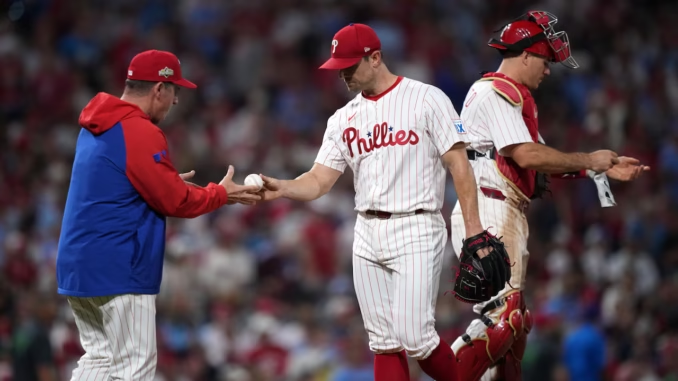
For several seasons now, the Philadelphia Phillies have positioned themselves as one of the premier contenders in Major League Baseball. Their roster has been built around star talent, experienced veterans, and aggressive moves designed to push them deep into October. Each year, their mission has been clear: compete with the league’s elite and bring a championship back to Philadelphia.
And while the team has delivered thrilling stretches of baseball and postseason runs that energized their fan base, they’ve also fallen short of capturing the ultimate prize. They have consistently come close, but “almost winning” has become a frustrating storyline for this era of Phillies baseball.

As the dust settles on the most recent MLB season—capped off by the dramatic Game 7 conclusion of the World Series—the sport shifts immediately into its offseason phase. The World Series isn’t just the end of the year—it’s also the official marker that signals the beginning of free agency, a time when rosters start changing and front offices begin re-imagining what the next season will look like.
Read More: Mets officially cut ties with 8 players this offseason
Teams everywhere reassess their priorities, evaluate who stays, and begin exploring the market for players who might help them take the next step. For a contender like the Phillies, this transition carries even more weight. The decisions made in the coming weeks will play a crucial role in determining if they can finally break through their current plateau.
On Sunday, shortly after the World Series wrapped up, Major League Baseball released the official list of players from every team who are entering free agency this offseason. For Philadelphia, the announcement was staggering: nine players from the Phillies organization are now free agents. It’s a massive group—one that guarantees change is coming.

The nine players from Philadelphia who have officially entered the open market are:
-
Walker Buehler
-
Max Kepler
-
Tim Mayza
-
J.T. Realmuto
-
David Robertson
-
Jordan Romano
-
Kyle Schwarber
-
Ranger Suarez
-
Lou Trivino
Seeing this many players hit the market at once creates an immediate sense of uncertainty. Some of these names represent core contributors. Others are veterans who could still provide value if the organization chooses to bring them back. And a few are players whose future with the team has been unclear for a while. What connects all of them is that every one of these decisions will shape the Phillies’ path forward.
Read More: Braves to cut ties with 4 veteran players to free agency
Among the group, Kyle Schwarber stands out as the free agent who will attract the biggest wave of interest from teams across the league. Despite no longer playing defense and functioning primarily as a designated hitter, Schwarber remains one of the most dangerous power hitters in baseball. Few players can bend a game with a single swing the way he can.

His recent season—where he smashed an eye-popping 56 home runs—only reinforces that fact. Regardless of concerns about strikeouts, defensive limitations, or age, clubs covet power, and few hitters in the sport can change momentum faster than Schwarber.
For Philadelphia, choosing whether to invest in him again is as much a financial decision as it is a strategic one. His bat is elite, but bringing him back might mean sacrificing spending in other areas.
Ranger Suarez, meanwhile, provides value in a completely different way. Suarez has emerged as a reliable, steady starting pitcher—someone who brings consistency every time his turn in the rotation comes up. Pitching depth is critical in baseball, especially for teams chasing postseason success.

Suarez has shown he can rise to the occasion in big moments, and it’s difficult to replicate the calmness he brings on the mound. Philadelphia would benefit from retaining him, but free agency makes everything uncertain. If other teams aggressively pursue him with large offers, the Phillies could be forced into a tough financial decision.
Read More: Mariners officially have 4 players entering free agency with different story entirely
Then there is J.T. Realmuto, long regarded as one of the best all-around catchers in the sport—even as he progresses further into the later stages of his career. Realmuto has remained strong both behind the plate and at it. Catchers with his defensive skills, athleticism, and offensive production are rare. Even if his prime years are starting to fade, his leadership and baseball IQ are invaluable.
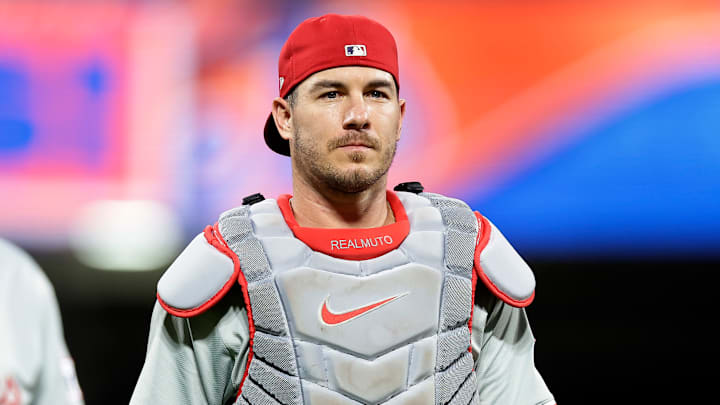
For many fans, it’s difficult to even imagine a version of the Phillies without Realmuto. Yet the business side of the sport doesn’t bend for sentiment. Philadelphia must determine whether bringing back a veteran catcher—one who still contributes at a high level—fits its long-term structure.
Other names on the list—Max Kepler, David Robertson, Walker Buehler, Jordan Romano, Tim Mayza, and Lou Trivino—each bring intriguing qualities of their own. Kepler has had stretches where he looks like a dynamic outfielder capable of producing at the plate while also playing a solid defensive outfield.
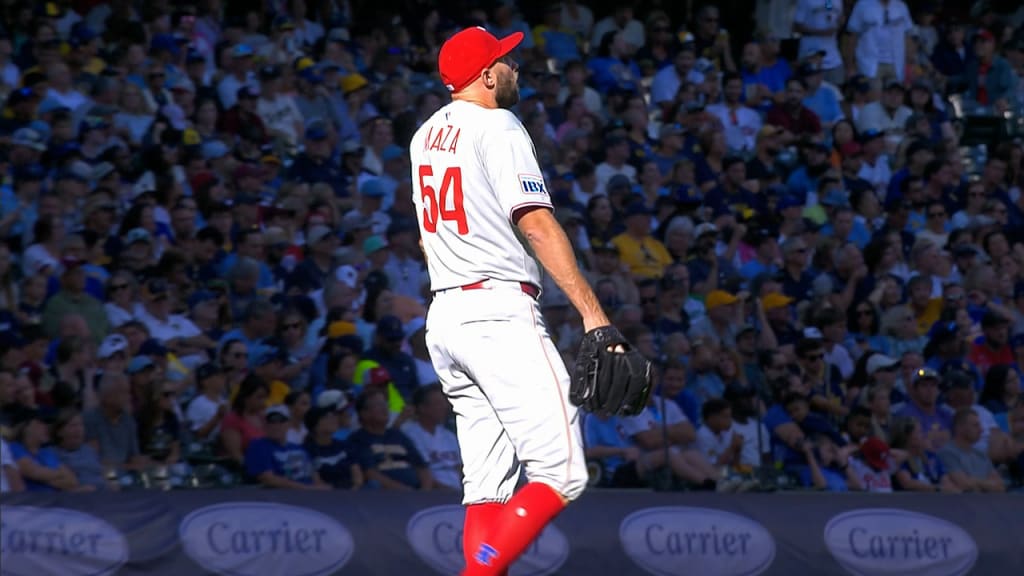
Robertson, long known as a reliable and battle-tested reliever, has delivered numerous key innings throughout his long career. Romano has shown flashes of being a top-tier bullpen arm, and Mayza offers left-handed depth that teams constantly search for. Buehler, when healthy, possesses ace-caliber ability; his postseason pedigree alone will generate interest. Trivino has also shown effectiveness out of the bullpen.
Read More: Reds to cut ties with Zack Littell, Nick Martinez and 3 others this offseason
In a perfect world—one without financial restrictions or roster limits—Philadelphia might gladly welcome several of these players back. Each brings something unique to the team dynamic. But Major League Baseball doesn’t work that way. The front office must balance payroll flexibility, future roster planning, and the strategic allocation of resources. They must consider where the team struggled most, what needs are most urgent, and where free agency or trades might offer better or more cost-efficient solutions. After all, contenders have to maximize every financial advantage they can.
Thus, despite the emotional connection between players and fans—and even between players and the organization—the reality is that the Phillies will not retain all of them. In fact, they are unlikely to keep more than a small portion of this group. The team will almost certainly pick one or two players to negotiate with aggressively, while others will walk into new uniforms and new clubhouses in 2026.
That inevitability leads to a larger truth: the Phillies of next year will not look like the Phillies fans have grown accustomed to watching. Change is coming. New personalities, new roles, and new strengths will emerge as the roster evolves. Some players leaving will feel like a loss. Others will create space for emerging prospects or allow management to pursue key offseason targets. With free agency in motion, the front office now has the opportunity to reshape the team—potentially into a group even better positioned to clear the hurdle that has held them back in recent years.

This transition can feel bittersweet. Fans bond with players, especially those who deliver postseason highlights or memorable performances. Seeing their names on a free-agent list makes it clear that nothing is guaranteed in professional sports—not even the return of familiar faces. The offseason becomes a time of reflection, possibility, and uncertainty. Players who were constants in the dugout can suddenly seem like chapters from a previous era.
Read More: Tigers trade land Cardinals’ $5.4 million All-Star second baseman, to replace Gleyber Torres
But there’s also excitement in this moment. The open market brings opportunity. It offers the chance for Philadelphia to target new talent, consider bold moves, and pursue the upgrades necessary to break through and finally win the biggest games in October—the ones that have slipped away in recent years.
Whether the Phillies bring back one of these nine free agents or just allow them all to move on, the takeaway is the same: the 2026 Phillies are going to look different. And with that difference comes the potential—perhaps even the expectation—that the next version of the team is the one that finally finishes the journey this current era has started.
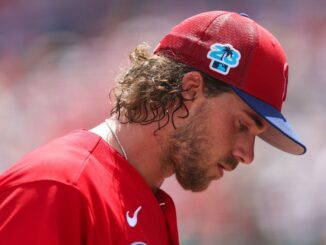
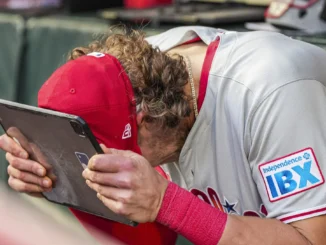

Be the first to comment